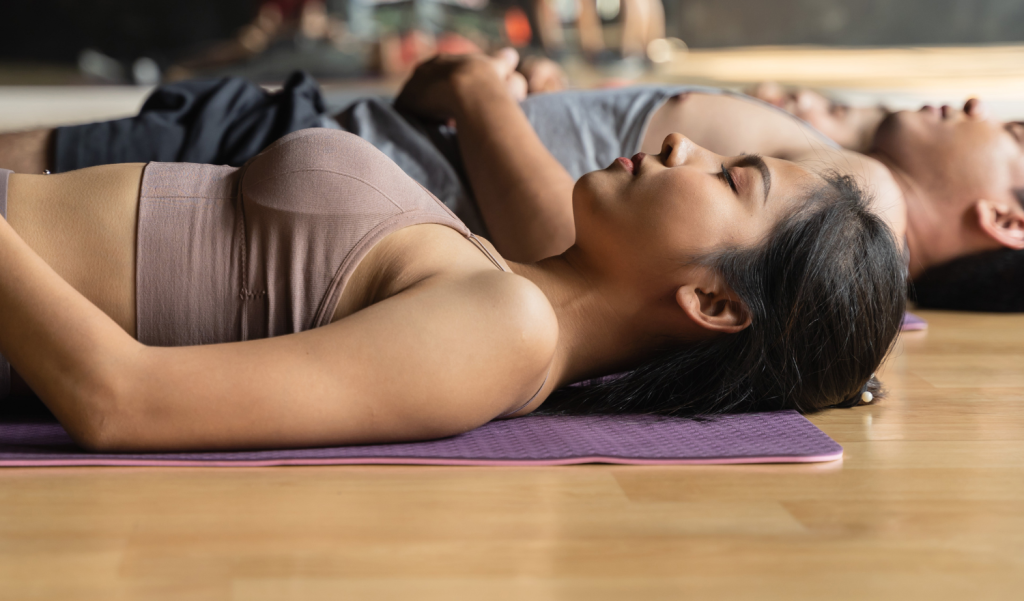How a Busy Mom of Two Discovered the Power of Breathwork
As a 32-year-old mom to two energetic boys, aged 7 and 8, life can feel like a whirlwind. Between running my business as a candle maker and wellness coach, making sure my eldest son gets to soccer practice three times a week, and squeezing in my own time at the gym, it’s easy to feel overwhelmed. I used to wonder how I could possibly keep it all together without losing my mind. Then, I discovered breathwork.
One particularly hectic day, I remember feeling on the verge of burnout. The demands of my business were piling up, the kids needed my attention, and I could barely catch my breath—literally. That evening, after tucking the boys into bed, I decided to try a simple breathwork exercise I’d read about. To my surprise, within just a few minutes, I felt a wave of calm wash over me. My mind cleared, and I felt grounded in a way I hadn’t experienced in a long time. That’s when I knew I had found a powerful tool to help me navigate the chaos of daily life.

Now, breathwork is a non-negotiable part of my daily routine, and it’s transformed how I manage stress, connect with my body, and approach each day with more clarity and calm. Here are 10 incredible benefits of practicing breathwork daily that have made a huge difference in my life—and they can in yours too!
The 10 Benefits of Practicing Breathwork Daily
1. Reduces Stress and Anxiety
Daily breathwork helps regulate the nervous system by activating the parasympathetic response, which reduces stress and anxiety. Studies have shown that slow, deep breathing can lower cortisol levels, the body’s stress hormone .
2. Improves Focus and Clarity
By increasing oxygen flow to the brain, breathwork enhances mental clarity and focus. Research indicates that breath-focused meditation practices can significantly improve cognitive function and attention .
3. Boosts Energy Levels
Breathwork techniques like deep belly breathing increase oxygen intake, which can boost your energy levels naturally. Studies have demonstrated that controlled breathing practices can improve energy levels and reduce fatigue .
4. Supports Emotional Regulation
Breathwork provides a natural way to process and release pent-up emotions. Practicing breathwork has been linked to improved emotional regulation, helping you manage stressors more effectively
5. Enhances Sleep Quality
Practicing breathwork before bed can improve sleep quality by calming the mind and body, making it easier to fall asleep and stay asleep throughout the night. Research supports the use of breathwork to improve sleep latency and duration .
6. Strengthens Lung Capacity
Regular breathwork exercises can increase lung capacity and improve respiratory function. This is particularly beneficial for maintaining overall health and vitality, especially if you’re active.
7. Reduces Blood Pressure
Breathwork has been shown to lower blood pressure by promoting relaxation and reducing the workload on the heart. Controlled breathing techniques have been validated as effective in reducing both systolic and diastolic blood pressure.
8. Supports Immune Function
Deep breathing boosts lymphatic circulation, helping to remove toxins and support immune function. Increased lymph flow from breathwork can enhance immune response and promote overall health.
9. Promotes Mind-Body Connection
Breathwork encourages a deeper connection between your mind and body, promoting mindfulness and awareness. For me, this connection has been key in finding balance and staying present, whether I’m in the gym, at work, or with my boys.
10. Encourages Self-Reflection and Growth
Taking time to focus on your breath naturally creates space for self-reflection. It’s in these quiet moments that I’ve gained insights into my life, made important decisions, and nurtured personal growth .

Try This Beginner Breathwork Exercise: 4-7-8 Breathing Technique
Step 1: Sit comfortably with your back straight and your hands resting on your lap. Close your eyes and take a deep breath in through your nose, counting to 4.
Step 2: Hold your breath for a count of 7.
Step 3: Slowly exhale through your mouth for a count of 8, making a whooshing sound.
Step 4: Repeat this cycle for 4 breaths, gradually increasing as you become more comfortable.
This simple exercise helps to calm the nervous system, reduce stress, and bring your focus back to the present moment.
Cautions: If you’re new to breathwork, start slowly and don’t force your breath. If you experience any dizziness, discomfort, or shortness of breath, stop immediately and return to your normal breathing. Pregnant women or individuals with respiratory issues should consult a healthcare provider before starting any breathwork practice.
Final Thoughts
Incorporating breathwork into my daily routine has been transformative. It’s a simple, powerful tool that helps me stay grounded, focused, and energized amidst the daily hustle of motherhood and entrepreneurship. Whether you’re managing a busy household, a demanding career, or both, taking a few moments each day to focus on your breath can have profound benefits. Start small, be consistent, and watch how this practice can bring calm and clarity to your life.
If you’re curious about how breathwork can support your wellness journey, I encourage you to give it a try. It’s made all the difference for me, and I’m confident it can do the same for you. Remember, the breath is always there for you—just take a moment to tune in.
References
6. Jerath, R., Edry, J. W., Barnes, V. A., & Jerath, V. (2006). Physiology of Long Pranayamic Breathing: Neural Respiratory Elements May Provide a Mechanism That Explains How Slow Deep Breathing Shifts the Autonomic Nervous System. Medical Hypotheses, 67(3), 566-571.
- Zeidan, F., Johnson, S. K., Diamond, B. J., David, Z., & Goolkasian, P. (2010). Mindfulness Meditation Improves Cognition: Evidence of Brief Mental Training. Consciousness and Cognition, 19(2), 597-605.
- Brown, R. P., & Gerbarg, P. L. (2005). Sudarshan Kriya Yogic Breathing in the Treatment of Stress, Anxiety, and Depression: Part I—Neurophysiologic Model. Journal of Alternative and Complementary Medicine, 11(1), 189-201.
- Arch, J. J., & Craske, M. G. (2006). Mechanisms of Mindfulness: Emotion Regulation Following a Focused Breathing Induction. Behaviour Research and Therapy, 44(12), 1849-1858.
- Tang, Y.-Y., Ma, Y., Fan, Y., Feng, H., Wang, J., Feng, S., … Posner, M. I. (2009). Central and Autonomic Nervous System Interaction Is Altered by Short-Term Meditation. Proceedings of the National Academy of Sciences, 106(22), 8865-8870.
- Streeter, C. C., Whitfield, T. H., Owen, L., Rein, T., Karri, S. K., Yakhkind, A., … Jensen, J. E. (2010). Effects of Yoga versus Walking on Mood, Anxiety, and Brain GABA Levels: A Randomized Controlled MRS Study. Journal of Alternative and Complementary Medicine, 16(11), 1145-1152.
- Pal, G. K., Velkumary, S., & Madanmohan. (2004). Effect of Short-Term Practice of Breathing Exercises on Autonomic Functions in Normal Human Volunteers. Indian Journal of Medical Research, 120(2), 115-121.
- Andrade, F. C. D. (2017). Yoga and Lymphatic System Functioning: A Review of the Literature. Journal of Bodywork and Movement Therapies, 21(2), 270-276.
- Wang, D., & Liu, T. T. (2016). Functional Connectivity between Right Fronto-Insular Cortex and Right Anterior Temporal Pole Predicts Cognitive Flexibility in Aging. Frontiers in Aging Neuroscience, 8, 60.
- Farb, N. A. S., Anderson, A. K., Mayberg, H., Bean, J., McKeon, D., & Segal, Z. V. (2010). Minding One’s Emotions: Mindfulness Training Alters the Neural Expression of Sadness. Emotion, 10(1), 25-33.


